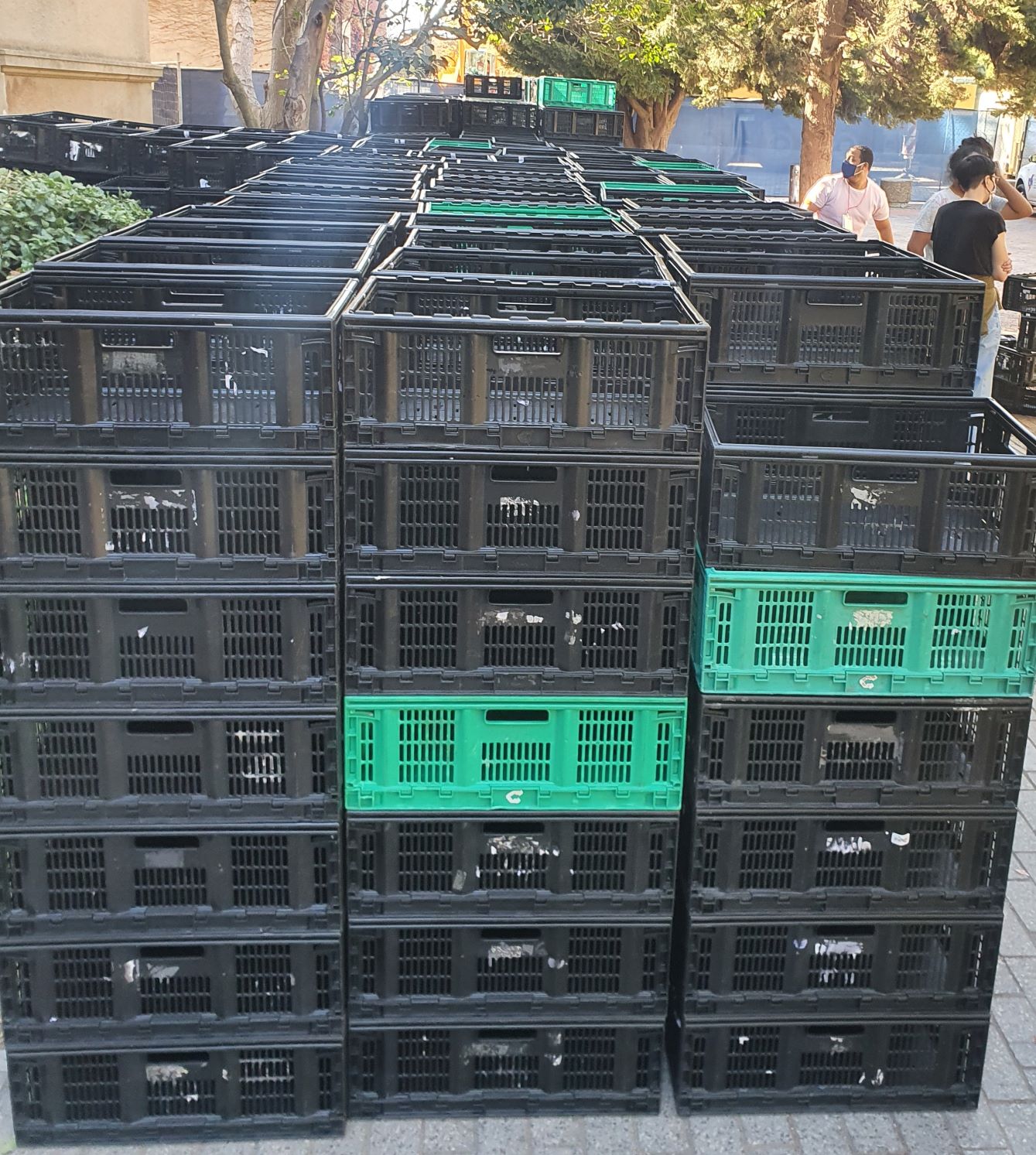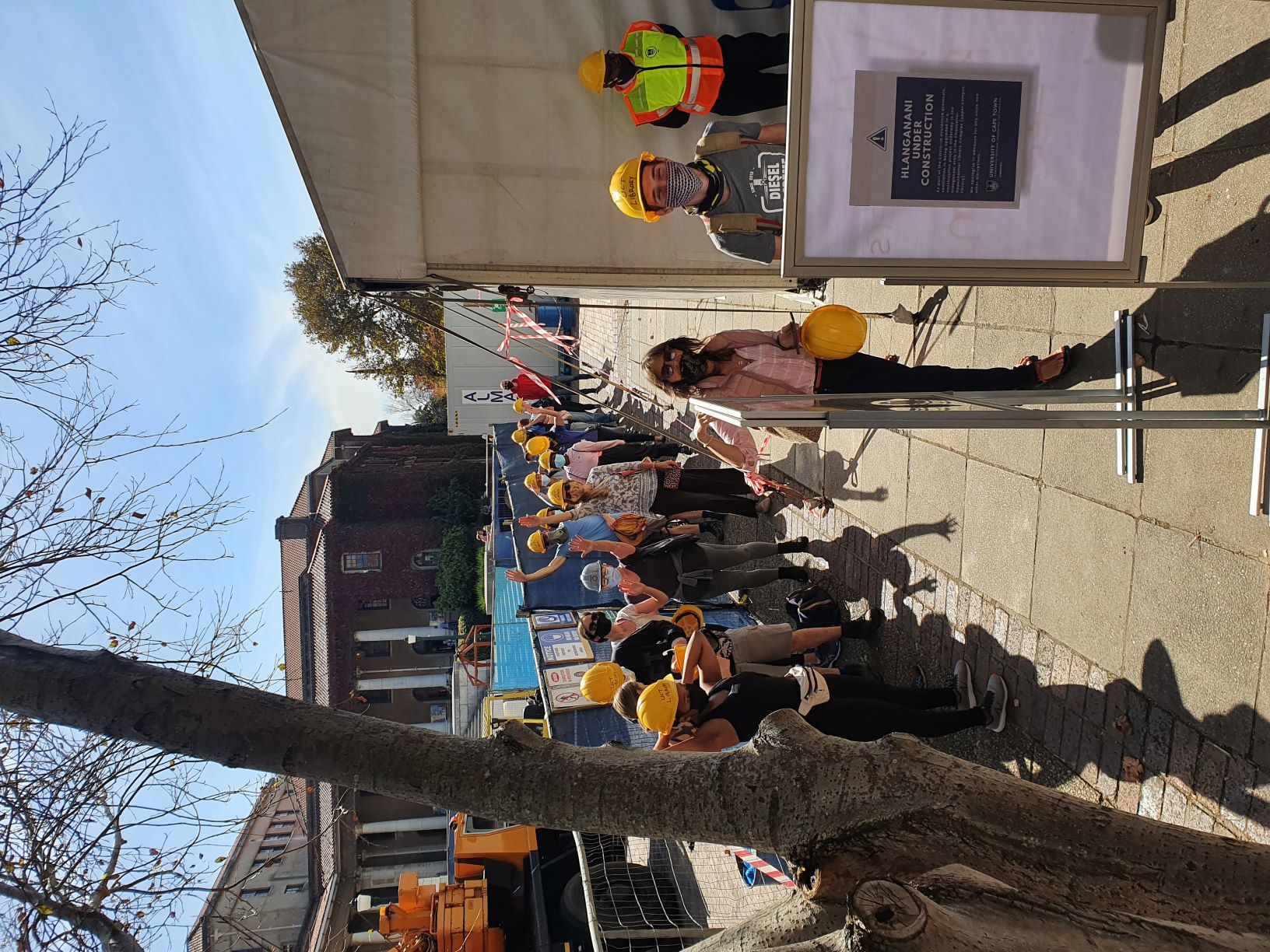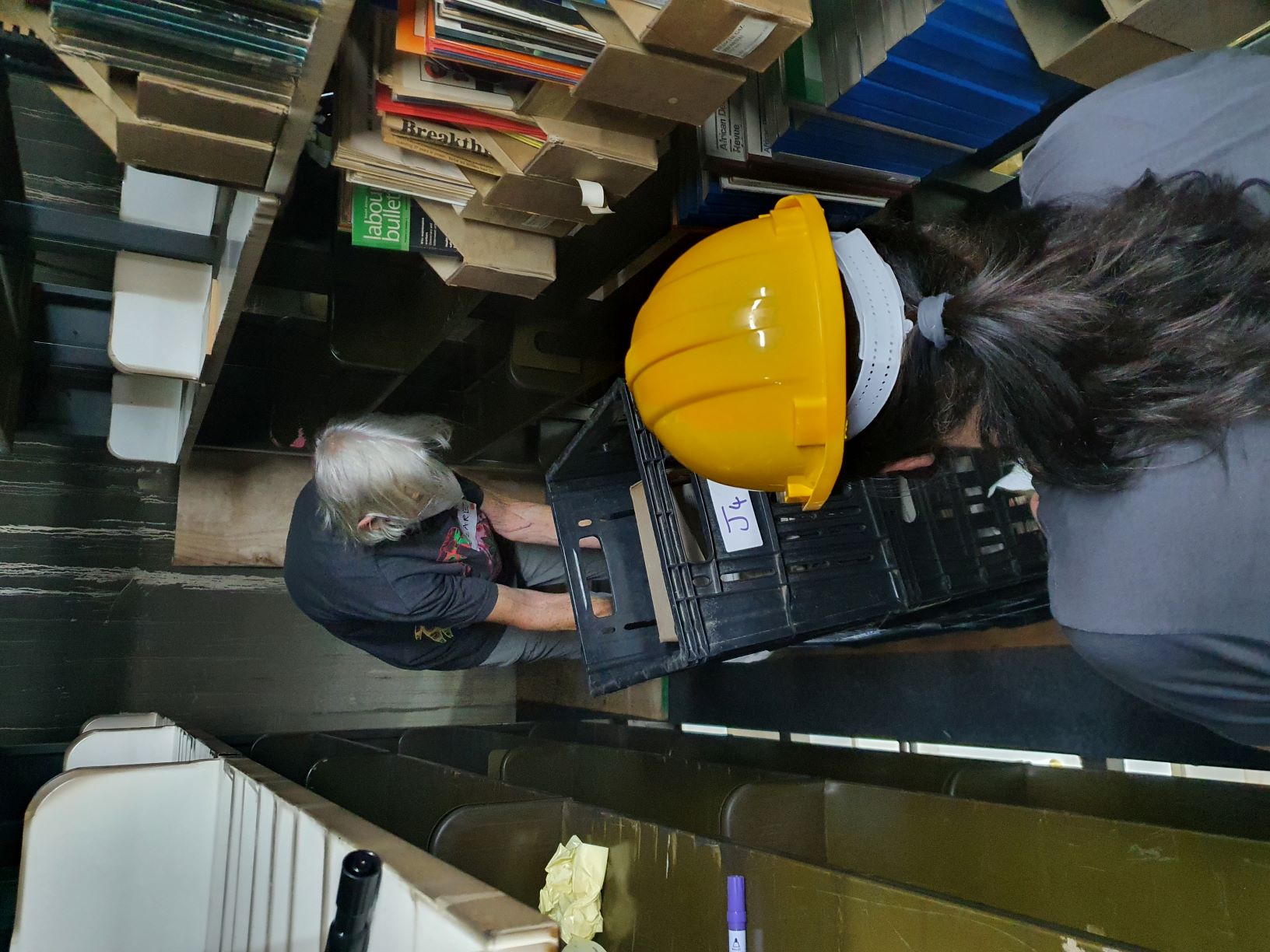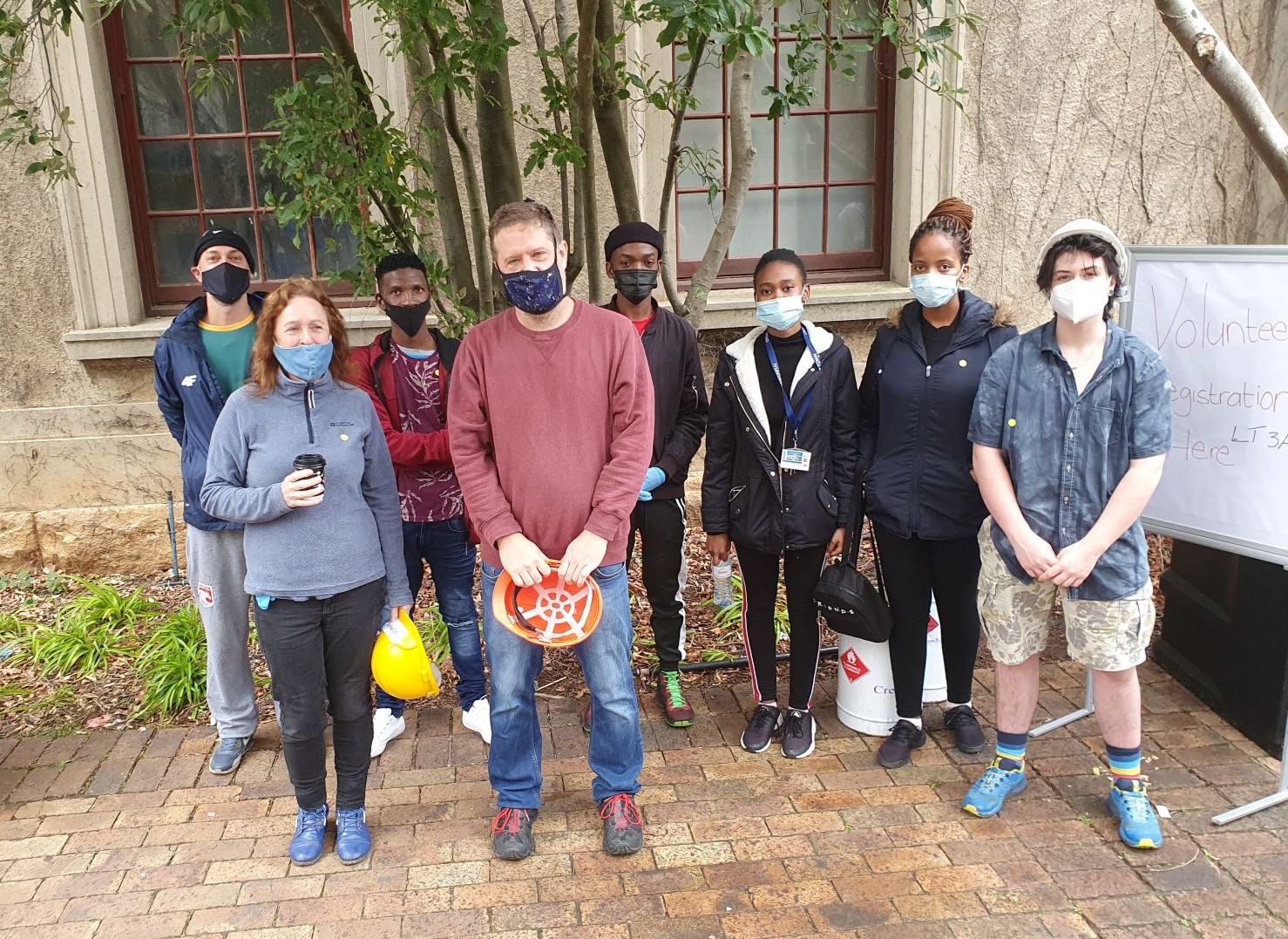by Thomas Slingsby, UCT Libraries
My name is Thomas Slingsby. I have worked for UCT Libraries since 2019 as a GIS Officer. Geographic Information Systems, or GIS, is a software system for handling, analysing, and visualising spatial data. Simply put, my role is to assist researchers to analyse and map any spatial data they collect during the course of their research.
I never thought I would be applying any of that knowledge to mapping and moving an archive.

(Credit: Sanjin Muftić)
On the 18th of April 2021 fire destroyed the African Studies Library and the Jagger Reading Room, taking with them some of Afrika’s most precious and unique knowledge. On the 22nd of April we were told the building was sound and that we could access the lowest levels. The levels that survived the fire are subterranean, a warren of closely packed shelves and cabinets. They were soaked by the water used to extinguish the fire, and pitch black. Plenty of bad news.
The good news was the best news though, the archive had survived! It was stuck in a pitch black subterranean swamp, it was water logged and, due to safety concerns, it was not easily accessed, but it was! And we had to move it to safety as fast as we possibly could.
The first day of salvage was a controlled chaos of identifying and recovering items and collections, but the more we moved the more apparent it became that we were only scratching the surface. This was not a task that would be completed quickly or easily, we were going to need a lot of help.
On Friday the 23rd of April we were better organised. We had crates for carrying material, a system to help identify material later on and volunteers to help us. 4 volunteers. We made some progress, we may even have moved an entire single percent of the archive. There weren’t many of us that first Friday.

(Credit: Michal Singer)
What we needed most were crates to put material in and hands to help us move them. A number of organisations and companies generously donated crates and we channeled the multitude of volunteer offers we were receiving into a volunteer program. On Sunday the 25th of April over 2000 crates worth of material were removed from the archive with the help of nearly 300 volunteers.

(Credit: Michal Singer)
The salvage conditions were unpleasant with a very high humidity and the pervasive smell of burned down building. Mask wearing was compulsory, for COVID, but also for the molds that love to grow in damp, fetid conditions. Cramped, damp, continuous physical labour is not much fun, but the volunteers worked tirelessly to help us get all materials to safety. The work continued without a break for 3 weeks. May the 15th was the first day with no activity on site.

(Credit: Michal Singer)
Every day of salvage was split into two shifts, with the bulk of each shift working to retrieve material from the archive, while triage volunteers assisted with the handling, cleaning, and treatment of damaged materials. Space inside the building was at a premium, some of the isles in the archive were so narrow that you could not turn around while holding a crate. Only one way traffic was possible. To retrieve material we would set up human chains, of up to 100 people sometimes, to either pass empty crates into the archive, or to pass packed crates out. Empty crates would be passed in and stacked in any and every available nook and cranny. Once as many crates as possible had been moved inside we would reverse the direction of the human chain. Small teams of 2 or 3 would be assigned to pack crates, one to pack, one to label and one to replace packed crates with empty ones.

(Credit: Michal Singer)
The packed crates would then be passed back out along the human chain to be stored elsewhere on campus. In the narrow confines of the archive it was easier to spread packing teams out, there simply wasn’t space to have multiple teams packing in the same area, and this would result in branches in the human chain. At one stage I remember having five different packing teams working with a human chain that looked more like a tree of life.

(Credit: Thomas Slingsby)
In the end I led around 15 of the salvage shifts, mostly in the afternoon and they all had a very similar rhythm. Every day I would meet a new group of strangers with little or no previous experience of salvage and within an hour they would be working with a will and a purpose that would not slow down for at least another three. Shifts started slowly with the first half an hour containing quite a lot of standing around for the volunteers as they were inducted, PPE was distributed, and tasks for that shift were identified.
The next half an hour would be about getting everyone into place and comfortably understanding the tasks to be done. Then there would be around an hour of full pace work before taking a short, 20 minute break. It was always a constant source of amazement and pride for me that after the break the volunteers, who had milled about without purpose just 2 hours before, would go straight back to the tasks at hand with a clear understanding of purpose with very little prompting from me.

(Credit: Michal Singer)
Once a shift was up and running my job was to keep everything moving: identifying stoppages and clearing them; making sure there were enough clean, dry crates on hand; ensuring that packed crates were being cleared and transported; that there were enough labels; and that everyone had the correct PPE. Keeping everyone calm when the lights invariably went out and plunged the entire operation into darkness. Making sure everyone was hydrating. Identifying people who were clearly taking strain and making sure they looked after themselves.

(Credit: Michal Singer)
I had a few standard phrases I would throw out, like “Don’t engage with the content” because it was incredibly easy to be sidetracked by some amazing artifact, or “Nothing in this archive is more important than any of you” because people would throw themselves into the work with such fervour that I would worry about them hurting themselves. Every shift would have some unique and crazy situation to be dealt with and always the problems were solved and the work continued with a minimum of fuss.
The work of the volunteers was repetitive and back breaking and required constant attention and focus to ensure that materials were salvaged safely, securely, and quickly. Despite this the camaraderie, spirit and teamwork of nearly 100 people working to a single purpose was simply amazing.
In total just over 2000 people volunteered to assist with salvaging the archive. To every single one of you I would like to say thank you.
Thank you.
Thomas
Thomas Slingsby has a background in Geomatics and has worked as a GIS Consultant at UCT for nearly two decades. He is based in the GIS Unit, Digital Library Services
